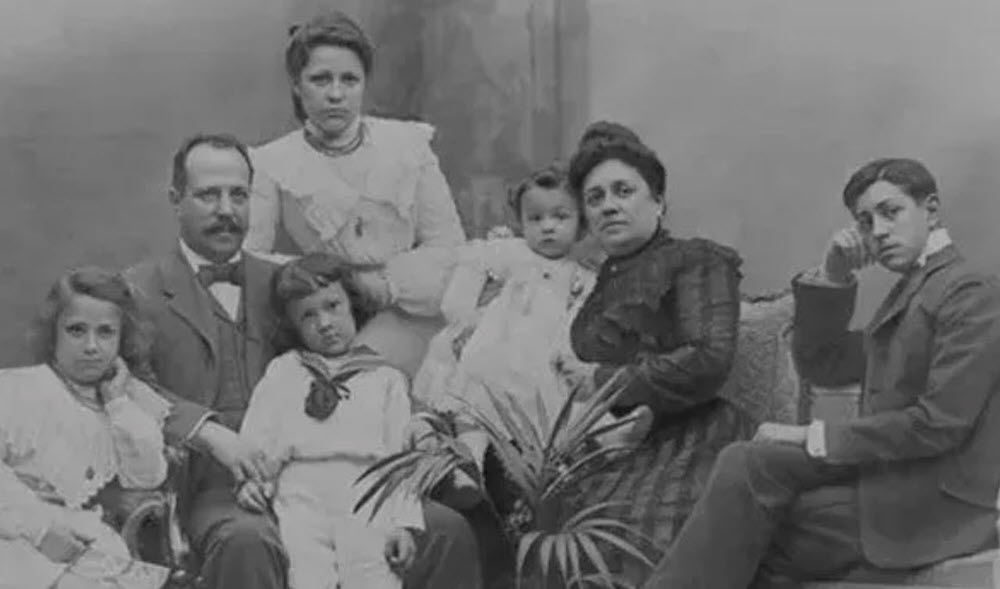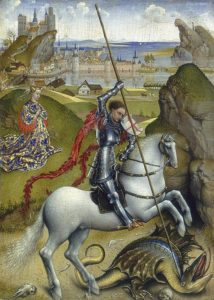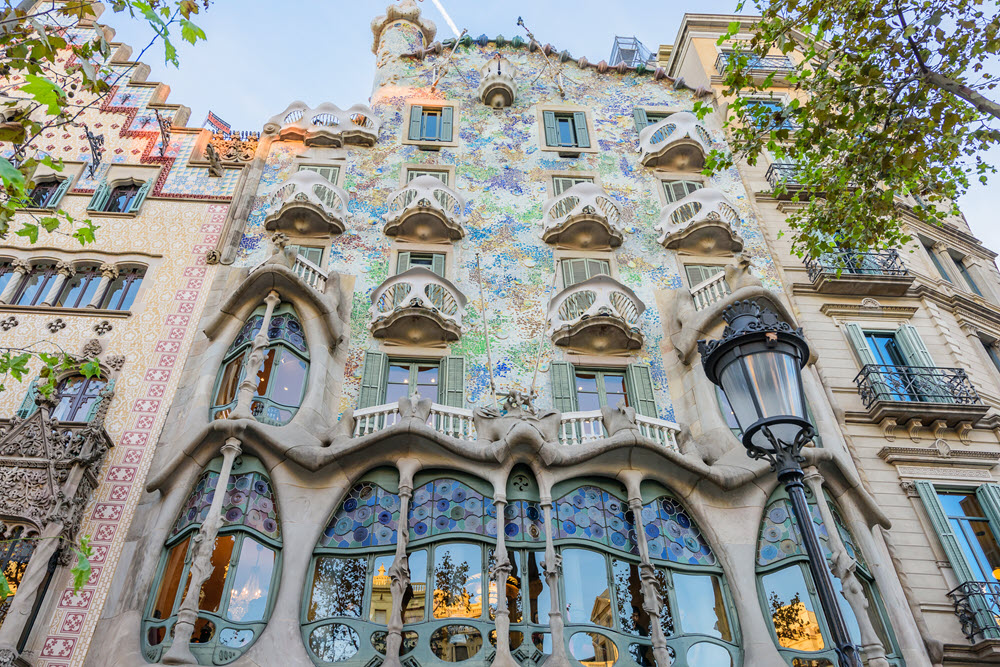
Visit Casa Batlló, Barcelona’s most famous son is not an actor or musician, but an architect. Countless buildings in the city bear the signature of Antoni Gaudí.
Casa Batlló is one of the decorative figures par excellence, not only for him, but for the whole city.
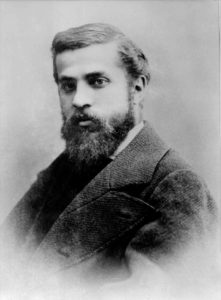
Shapes, colors, figures: no other building screams ‘Gaudí‘ as loudly as Casa Batlló. Thanks to the dedication of the owners, this architectural marvel can also be seen from the inside. Let yourself be enchanted by spectacular technical illustrations.
Table of contents
Casa Batlló opening hours
Casa Batlló is open all year round, 365 days a year. This also applies to general vacations such as Christmas, New Year’s Day or Easter, which is of course very beneficial for the many visitors to Barcelona. The relatively long admission times until the early evening hours are also favorable.
Every day from 9:00 a.m. to 6:30 p.m.
Paseig de Gràcia, 43
08007
Barcelona
Approximate duration: 1hour
Due to the long opening hours, the endless stream of visitors should be spread out over the entire day if possible. With cruise ship tourists often disembarking early in the morning, the first numerous visitors appear at 9:00 am.
When you book your ticket, you get access to Casa Batlló for a selected date at the desired time, please note that the duration of the visit is unlimited, but the experience is calculated that it should take no more than 1 hour.
The last admission of visitors is therefore at 20:00, one hour before closing time at 21:00. Gaudi fans and art and culture lovers should not enter the building too late to have enough time to visit the interior.
The style of modernism

Casa Batlló was built in the Art Nouveau style. This architectural style is considered the Catalan counterpart of Art Nouveau in Germany. The cultural movement of modernism spread throughout Europe. Until then, architecture was more industrial and purely functional. The new style took what was there, i.e. neo-Romanesque and neo-Gothic architecture, and combined them with new ideas.
Modernism was not satisfied with being just an architectural style. Rather, it wanted to be present in all areas of human life. An architect not only built a house, but recently also designed the interior: starting with stairs and walls, to lamps and furniture.
In Europe, Art Nouveau was more an expression of the zeitgeist of the time. In Catalonia, on the other hand, Art Nouveau was an expression of Catalonia’s independence or desire for independence from Spain. With their modernist buildings, builders and owners were able to make their support for this movement visible to all and enjoy respect and admiration for it.
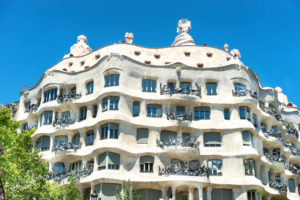
In modernism, the emphasis was on curved shapes and colors and was inspired by nature and the naturalness and movement it contains. A good example of this is the cantilevered arched structures known as “Catalan vaulting”.
Modernist buildings are also often adorned with decorative ceramic elements, such as plants or animals.
Animals such as lizards and snails appear in almost all of Gaudí’s masterpieces. One of his greatest inspirations is the sea: mosaics, blue like the ocean, and curved shapes reminiscent of waves adorn many of his works of art.
Tickets to Casa Batlló
The following table shows the different entrance fees to Casa Batlló:
Upon entry, visitors receive a SmartGuide , an easy-to-use handheld device for all ages that allows them to explore the building’s facilities in a special way. There is no application to download. The SmartGuide is a device made available by Casa Batlló.
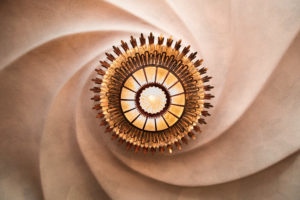
Tickets booked online in advance can also be presented on your smartphone or tablet. No hard copy is required. There is also much more information available on Casa Batlló admission prices.
The history of Casa Batlló
At first glance, one might think that Gaudí had built Casa Batlló. This is not the case, however, because the building was built by Emilio Sala Cortés as early as 1877. Curious detail: Cortés was Gaudí’s teacher during his architectural studies. With this gigantic project, the pupil not only rose above his teacher, but also put him in the shadow.

casa batllo barcelona 
old map of barcelona
The then city government of Barcelona decided on an ambitious plan for how the city should look in the future and chose Passeig de Gracia as the main street. Over time, this turned the street into a prestigious boulevard for carriages and pedestrians, and later for automobiles.
Gradually, the upper class moved to this area of Barcelona, and all fought for originality and individuality. One of them was the textile entrepreneur Josep Batlló. He commissioned Gaudí to completely rebuild his house at 43 Passeig de Gràcia . Today’s architectural masterpiece was also named after its owner. From 1904 to 1906, Gaudí redesigned the house so that it was no longer “just” a residential building, but soon became one of the most outstanding pieces of architecture in history.
After Josep Batlló’s death in 1934, the house had different owners. In 1993, Enric Bernat, the founder of the well-known Chupa Chups Lollipops, bought it and extensively renovated it. Two years later, the family opened the building to the public to share Gaudí’s masterpiece with the world. Since then, fans have not only been able to admire the building from the outside, but also from the inside. But this also means that the Bernat family no longer receives any subsidies from the state to maintain the building; it is financed solely through ticket sales.
Today, Casa Battló is not only a listed building, it is also a UNESCO World Heritage Site. Every year, around one million visitors visit the architectural jewel.
Unique experience at Casa Batlló
The following table shows another entry for a unique experience at Casa Batlló. All details are on the supplier’s website.
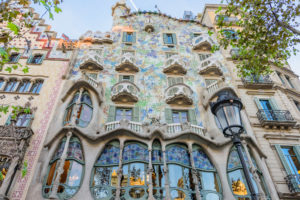
Only a limited number of tickets are available on the dates.
Pay attention to the supplier’s offer and book early!
Casa Batllo
There is much to discover
Casa Batlló is ‘a typical Gaudí‘. The signature of the great architect is immediately recognizable by the curved shapes and mosaic decorations. The highlight of this building is undoubtedly the facade, as it tells the story of Sant Jordi. It is said that the patron saint of the Catalans killed a dragon with the help of a spear. The cross on the roof of the building represents the spear, the roof represents the scales of the dragon and the gallery on the second floor represents its mouth. The building is made of concrete, ceramic and iron, the sandstone facade is decorated with colorful mosaics.
Because of its shape, the building looks really mystical. The wrought iron balconies are reminiscent of skulls, the supporting columns of bones. This is the reason why the house is often colloquially referred to as the “house of bones“.
As is well known, visitors can also visit the interior. Round and fun shapes predominate, as well as on the outside. You will not find straight lines or right angles, Gaudí was inspired by the movements and curved shapes of nature. A wide wooden staircase leads to the second floor.
In the summer months, the rooftop, accessible to the public, is transformed into a cocktail bar with live music. Parts of the building are still used today as a residential building.
Casa Batlló – Other entries

Full details on the offers can be found on the respective supplier’s website, you can take a look at the following link.
One step ahead of its time

Anyone who reduces the Casa Batlló to its overwhelming appearance would not only do an injustice to the building, but also to its creator. Because with the interior design, Gaudí has demonstrated his foresight, his pragmatism and his talent for technical solutions.
The best example of this is the light axis, which Gaudí redesigned after a long tinkering to ensure an even distribution of light in all rooms: the snow-white tiles on the ground floor melt into a strong blue towards the top. At the same time, the windows are enlarged towards the top. This creates the impression of a balanced incidence of light.
The life of Antoni Gaudí

Antoni Plàcid Guillem Gaudí i Cornet, as the artist’s full name is called, was born in 1852 in the Catalan town of Reus, south of Barcelona, as the son of a coppersmith and the youngest of five brothers. Already during his architectural studies in Barcelona he stood out as a talented and creative draughtsman.
Today Gaudí is one of the most famous and respected architects in the world. That was not the case then, of course. He is often offended by his ideas and plans or met with incomprehension, simply because they were different and often ahead of their time. His teachers were never sure whether he was a genius or a madman .
After graduating from university, Gaudí quickly found work in large architectural firms. Among his most famous works are Casa Batlló, of course, La Sagrada Família, Casa Milà and Park Güell.
In 1926 he was run over by a streetcar on his way to the Sagrada Familia construction site. Because passersby thought he was a beggar and had no identification with him, Spain’s most famous architect did not receive proper emergency medical care. He died a few days later at the age of 73. He is buried in the crypt of the Sagrada Familia.
What you need to know if you visit Casa Batlló
There are some more important tips for visiting Casa Batlló.
- The waiting time to get in is enormous. This applies to almost all of Gaudi’s masterpieces. This can only be avoided with online tickets purchased in advance. Many Barcelona sightseeing plans are quickly delayed by queues.
- Photography for private purposes without a tripod is allowed everywhere. If you are interested in anything else, always contact the press office at Casa Batllo itself.
- Free Wi-Fi connection is available for all visitors.
- Reduced mobility: a large part of the building is wheelchair accessible. There are also wheelchairs available that are suitable for the dimensions of the elevator.
- Visually impaired people : the visit is also suitable for visually impaired people. Braille is currently available in Catalan, Spanish and English. To facilitate the visit for blind people, an accompanying person is included in the ticket price.
- The hearing impaired can obtain an audio text, which is currently available in three languages: Catalan, Spanish and English.
- Pets are allowed, but only under the supervision of their owners and with prior approval on site by Casa Batlló staff.
Luggage storage: storage space is available for strollers and luggage. Lost items are stored for up to one month.
Of course, there is also the usual museum store with souvenirs, books and jewelry with Gaudi, as well as numerous souvenirs of Barcelona.
A must for every trip to Barcelona
Every tourist in Barcelona should visit Casa Batlló !
Gaudí
Gaudi is the city’s most famous son and this is one of his most famous buildings; if you don’t visit it, you are definitely missing something on your trip.
The building is a true work of art inside and out and is full of secrets, surprises and amazing moments. It is not just a well-designed house, but a clever interplay of shapes and colors . The details inside really transport the visitor to a fairytale world. What other house offers skylights in the shape of turtle shells or railings reminiscent of a dragon’s spine?
Location and directions
Map:
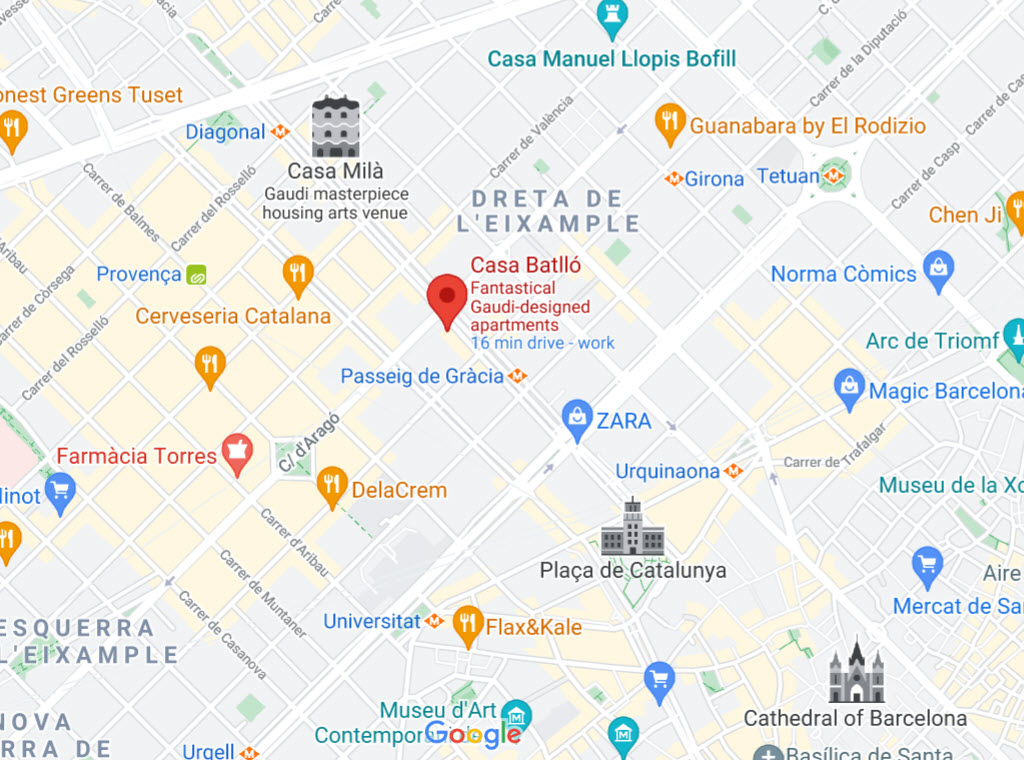
Directions:
Casa Batlló,
Passeig de Gràcia, 43,
08007 Barcelona.
How to get there
How to get there:
Here are some other options to get to Casa Batllo from the Viladecans Outlet.
- Metro Passeig de Gràcia: L2, L3 y L4;
- Bus H10, V15, 7, 22 y 24.
- Turistic Bus (blue and red route): Casa Batlló – Fundació Antoni Tàpies stop.
- It is a 700-meter walk to the central point of Barcelona, Plaça de Catalunya.
Surrounding area – Passeig de Gracia

Casa Batlló is located on Passeig de Graçia, which with its many small restaurants and cafes reflects the style of Barcelona. It is also ideal for strolling and shopping. Those who want to see more of Gaudi’s work will find the Casa Mila, also one of Barcelona’s most important sites, nearby. Here it is also essential to purchase tickets in advance.
The visit to Casa Batlló is definitely included in the two combined tickets 3 houses of Gaudí and Casa Batlló + Casa Milá, as well as in the Best of Gaudí Tour with Casa Batlló.
All details, including duration, language, etc., can be found on the provider’s website, follow link.
Please note that all prices quoted are subject to change. In principle, the supplier’s current price applies. Discounts and reductions for children and other visitors are also available.
Gaudí
